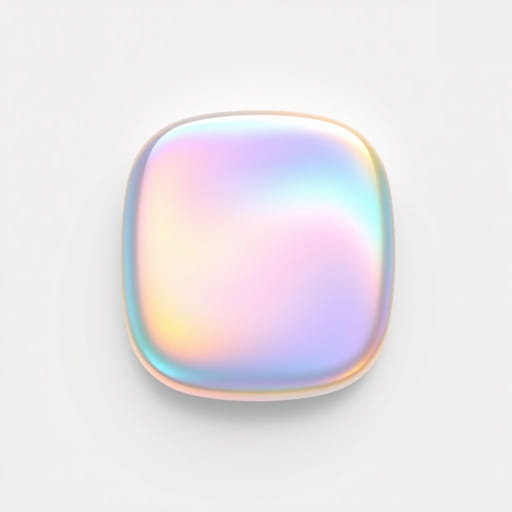In everyday language, we often encounter words that seem to carry a sense of beauty and wonder, and iridescent is one of those special words. It describes a visual experience that can catch the eye and inspire curiosity. Found in nature, fashion, art, and even language, the word iridescent conveys a shimmering, colorful appearance that seems to change depending on how it is viewed. Understanding what iridescent means and how it is used can add depth to your vocabulary and appreciation for the world’s visual wonders.
Definition of Iridescent
The wordiridescentrefers to something that shows luminous colors that seem to change when seen from different angles. This term originates from the Latin word iris, which means rainbow. When something is described as iridescent, it displays a spectrum of colors, much like a bubble or the surface of a soap film. The key feature is that the colors appear to shift or shimmer depending on the perspective of the viewer and the lighting conditions.
Common Synonyms
Some synonyms for iridescent include:
- Shimmering
- Glowing
- Lustrous
- Opalescent
- Radiant
While these words are similar, iridescent specifically captures the multi-colored, angle-dependent quality of light reflection that others might not.
Scientific Basis of Iridescence
In science, iridescence is often explained through the behavior of light waves. When light hits a surface with microscopic structures, such as butterfly wings or peacock feathers, it is scattered and reflected in different directions. This interference causes the light waves to overlap and produce different colors depending on the viewing angle.
This natural phenomenon is not due to pigments but rather to the physical structure of the surface. As a result, the colors seen in iridescent objects are not fixed they shift and change based on movement and light sources.
Examples in Nature
Iridescence is common in the natural world. Here are a few notable examples:
- Butterfly wings: Many species of butterflies, such as the morpho butterfly, have iridescent wings that flash different shades of blue and green.
- Peacock feathers: Male peacocks are famous for their iridescent tail feathers, which display a dazzling array of colors to attract mates.
- Soap bubbles: The thin film of a soap bubble shows swirling colors that change as it moves.
- Oily surfaces: Oil slicks on water can show rainbow-like iridescence due to light interference.
Uses of Iridescent in Sentences
To fully grasp the meaning of iridescent, it’s helpful to see how the word is used in different contexts:
- The hummingbird’s iridescent feathers shimmered under the sunlight.
- She wore an iridescent dress that reflected every color of the rainbow.
- The artist used iridescent paint to give the painting a dynamic, luminous effect.
These examples highlight how the term can describe objects that visually transform under varying conditions.
Symbolism and Metaphorical Meaning
Beyond its literal definition, iridescent also carries metaphorical meaning. It can be used to describe something that is beautiful, ever-changing, or complex. In literature or poetry, describing a person’s thoughts, emotions, or personality as iridescent suggests depth, richness, and unpredictability.
For instance, someone might say, Her iridescent personality captivated everyone around her, meaning her personality had many colorful facets and appealed to people in different ways.
Cultural and Artistic Significance
In art and design, iridescence is often associated with elegance and luxury. Iridescent materials are used in clothing, jewelry, cosmetics, and home décor to add visual interest and a sense of opulence. Designers appreciate the dynamic effect it has on appearance, making products look more vibrant and eye-catching.
In digital art and animation, iridescent effects are created through advanced rendering techniques that mimic the way light behaves on real surfaces. This can give a magical or futuristic aesthetic that enhances storytelling and mood.
Differences from Similar Terms
It’s easy to confuse iridescent with other descriptive words. Here’s how it differs from some of them:
- Metallic: Metallic describes a shiny, metal-like surface. While some metallic items can be iridescent, not all are. Metallic colors are usually consistent and don’t change with the angle.
- Pearlescent: Pearlescent refers to a soft, pearl-like shine with subtle color shifts. It is similar to iridescence but typically more subdued.
- Glittering: Glittering involves small reflective ptopics and is more about sparkling light than shifting color.
Everyday Applications of Iridescence
In modern life, you might come across iridescent items without even realizing it. Here are some everyday uses of iridescent materials:
- Fashion: Dresses, handbags, and shoes often use iridescent fabrics to stand out in low or dynamic lighting.
- Makeup: Iridescent eyeshadows, lip glosses, and highlighters add a reflective quality to enhance appearance.
- Automobiles: Some custom car paint jobs include iridescent coatings for a unique look that changes color as the car moves.
- Technology: Phone cases and laptop skins often use iridescent designs for a sleek, modern finish.
How to Use the Word Iridescent Effectively
When using the word iridescent, consider the context and visual detail you want to emphasize. It is especially effective when describing anything that reacts beautifully to light or when you want to suggest a shifting, complex nature. Writers, poets, and speakers use it to elevate descriptions and evoke imagery that feels alive and mesmerizing.
To make the best use of the word:
- Pair it with objects that naturally reflect or scatter light.
- Use it metaphorically for characters, ideas, or emotions with layers or complexity.
- Combine it with vivid verbs and adjectives for stronger impact.
The meaning of iridescent goes far beyond just describing a pretty object. It speaks to movement, change, and the way we perceive beauty through light. Whether you’re observing nature, creating art, or expressing emotion through words, iridescence adds a shimmering quality that captures the imagination. By understanding and using this term thoughtfully, you bring color and depth to your language, reflecting the ever-changing beauty of the world around you.
